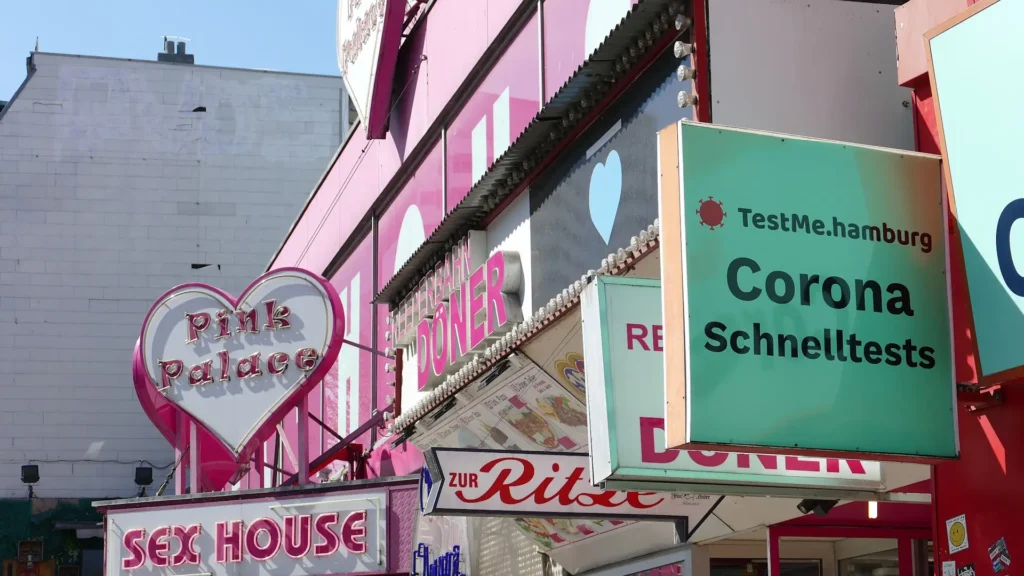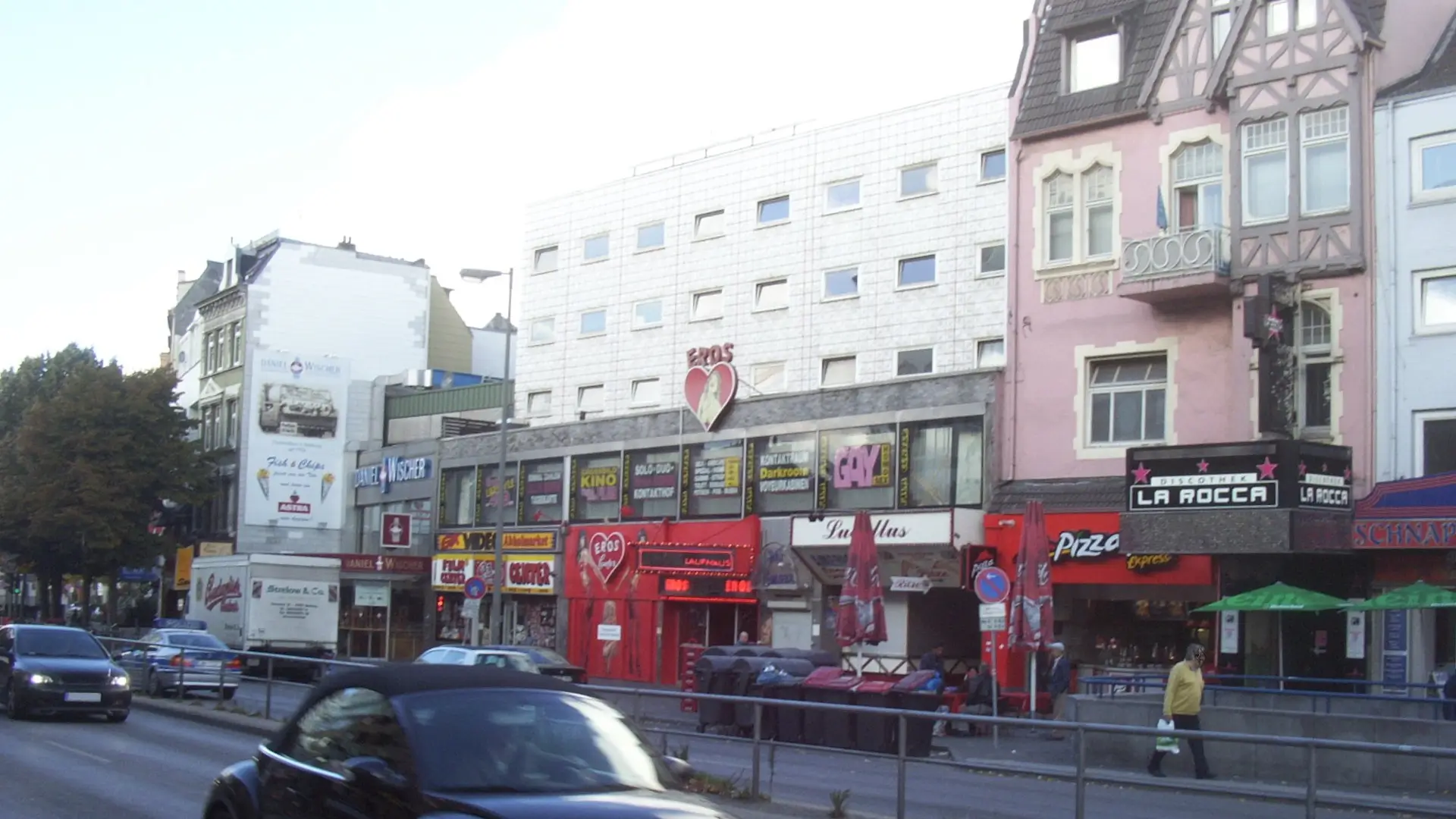In a bold operation, Hamburg police launched a large raid in the city’s red-light district, Reeperbahn. The raid targeted brothels, bars, and cafes, focusing on cracking down on organized crime and locating suspects linked to recent shootings and fraud cases.
The operation lasted over four hours, sweeping through the Davidstraße and Friedrichstraße areas in St. Pauli. A total of 51 individuals were checked during the night, and numerous luxury cars were pulled over and searched. Many of these vehicles are believed to be associated with individuals from the criminal red-light scene. The police presence was hard to miss, with uniformed officers and unmarked units flooding the streets.
As a result of the operation, police opened three formal cases: one for suspected money laundering, one for drug-related offenses, and one for illegal residency. In addition to these, four administrative violations involving weapons were documented. However, no arrests were made that night. Authorities emphasized that while no one was taken into custody, the collected evidence may lead to further investigations or future charges.
The Police had multiple goals
According to an official statement, the raid had multiple goals. The primary aim was to investigate the recent violent crimes in the area, particularly two high-profile shootings. At the same time, the police wanted to apply pressure on the criminal elements operating in the red-light district, making it clear that law enforcement is watching closely.
Just days earlier, on June 1, nearly 30 shots were fired at a newly opened tattoo parlor near Uhlenhorst, close to the Alster River. Only a few days later, a 41-year-old man identified as Philipp S.—allegedly linked to a rocker gang—was seriously wounded in another shooting.
Authorities suspect both incidents may be connected to ongoing turf wars between rival groups in Hamburg’s underworld.
The raid officially began around midnight and continued until 2 a.m. A total of 51 people were checked, and several high-performance vehicles were searched.
Three criminal cases were initiated, along with four violations related to weapons possession. While no arrests were made, the operation sent a strong message to the criminal scene: the police are present, organized, and prepared to act.
Officials were clear in their message: this was not just a one-night sweep but part of a broader strategy to restore order and safety to Hamburg’s red-light district.
The police stressed the importance of preventing further violence and investigating those responsible for the shootings. By increasing their visibility and conducting targeted raids, authorities aim to disrupt criminal networks and rebuild a sense of security for residents and visitors alike.
Crime in St. Pauli – facts & figures
Despite an overall decline in Hamburg’s crime rate, violent offenses have notably increased in St. Pauli and nearby St. Georg. In the past year, Hamburg recorded a 4% drop in total crime, yet violent crime rose by 7.2%, driven largely by the upticks in these two districts.
Between January–September, nearly 990 knife-related incidents (threats or assaults) were reported citywide—308 of which involved actual injury. St. Pauli is among the primary hotspots prompting ongoing policing and weapon ban zones since 2007 .
St. Pauli’s notorious reputation emerged mid‑20th century, with established pimping gangs such as GMBH, the dominant ring in the 1970s–’80s and rival groups like the Nutella-Bande and Chikago-Bande, vying for power on the Reeperbahn. In the 2000s, the Marek-Bande—sometimes called “Hamburger Jungs”—took over until massive 2005 police raids dismantled its structure.

The Reeperbahn, known for strip clubs, brothels, and sex workers in areas like Davidstraße and Herbertstraße, remains a locus for drug trafficking, fraud, and physical assaults. Herbertstraße alone once hosted around 250 window-prostitution workers at its peak, regulated by police and local bans to manage order.
Since at least 2007, St. Pauli has implemented weapon prohibition zones around Reeperbahn and deployed boosted police patrols and undercover operations, especially in hotspots like the Davidwache station.
While local pimping gangs have weakened in influence since the Marek-Bande era, modern threats include international drug smuggling rings and low-level organized crime linked to corruption. Police maintain ongoing investigative focus through CID units and documentary insights into “Special Unit 65” combating organized criminal structures.
Summary
St. Pauli’s reputation as Hamburg’s “sinful mile” endures, shaped by a history of pimping cartels, prostitution, weapon violence, and recent drug trafficking. While traditional gangs like GMBH and Nutella-Bande faded after years of police crackdowns, violence—especially knife incidents—and international drug smuggling via the port continue to pose threats.
Rigorous policing (weapon bans, special zones, undercover units) aims to keep a check on crime, but challenges persist in maintaining long-term safety and combating organized and opportunistic criminal networks.

